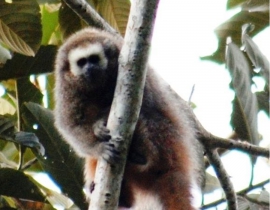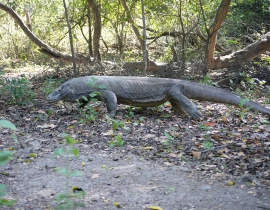Posted June 19, 2013 in All
It is essential to have some basic knowledge on the biology and behaviour of the species you are trying to conserve. Up until now, the density of the San Martin titi monkey has been studied in just 2 areas; Tarangue and Pucunucho. Tarangue, a protected area, was studied back in 2008 and studies found a presence of 1.41 individual monkeys per hectare. While in the conservation area of Puncunucho, only 1.12 individual monkeys per hectare were recorded. These results were much higher than once thought, however in regards to each area, their density in fact depends on many different factors. Each forest differs in their suitability for a certain species; there is also variation in vegetation and availability of food; also there are differences in the amount of predators present and the amount of human disturbance. All in all, density studies do provide valuable information, but the results must be handled with care and other factors considered.
It is believed that titi monkeys have a preference for forest edges, this could be down to the vegetation being denser and containing more of their preferred food items. Therefore it is expected that the density of titi monkey will be higher on the edges of a forest, compared to the middle. The question is how wide the edges are, and at what moment an edge changes into “real forest”. It has been calculated that if the edge effect penetrates 300m into a 100 hectare square-shaped forest fragment, only 16% of the fragment is unaffected by the edge effect. So, in turn, a small area of rainforest, which has a large percentage of forest edges would have more titi monkeys, compared to a large forest with small forest edges.
Another factor that is important is the presence of forest around the fragment. For instance, if a forest has been cleared around the fragment then it may host an unnaturally high number of monkeys. This could be down to the monkeys fleeing from the deforestation to these last remaining fragments of forest. During the project surveys, there was the impression that some forest fragments had extremely high densities of titi monkeys.
To investigate all of these factors, 2 studies commenced in May. One is a density study in the Ojos de Agua Conservation Concession, and the other is a comparable study in the protected area of the Morro de Calzada. Both forests differ considerably; while Ojos de Agua is covered with deciduous dry forest, most of the forest of the Morro can be labelled as being humid tropical forest. Both researchers will use the same methods, to make a comparison on both areas. This should increase the project’s knowledge on densities and habitat preferences of the San Martin titi monkey. Other density studies are also planned in other areas later on this year; this will get an all round picture on the density of monkeys in different forest types.
Last year the project also created 2 conservation concessions, covering a total area of almost 6,000 hectares. The area is close to 2 villages and to help increase the local support for nature conservation, Proycecto Mono Tocón has invested time in the development of ecotourism. Training programmes have now been developed to train future guides. The training includes lessons about nature (animals and plants), services to the tourists (cooking and food hygiene) and other relevant subjects. 6,000 hectares is already an impressive size, especially in a region where a lot of the lowland forest has disappeared. Plans are to now enlarge the area by creating new conservation concessions that are connected to this existing area. There is a lot of work to do, but if they could indeed increase the protected area to almost 10,000 hectares, then this would be great news for the San Martin titi monkeys (and the other animals that live in the area). Another conservation concession of 808 hectares is also being created. Although it is small in size, it is connected to another conservation concession of 2,700 hectares. This zone is covered with the rare deciduous dry forest habitat and many rare animal and plant species inhabit it. An increase of the protected area by 25% would be a great achievement.
It can often be very frustrating in protecting the remaining pieces of forest in San Martin, especially when many areas of rainforest have been designated as ‘production forest’. Although not all areas are suitable for titi monkeys, much of it is important to conserve. The creation of conservation concessions is time consuming and often expensive. However, as these are initiatives of the local communities, they offer the best chances that the protection will be sustainable throughout the years. Deforestation rates are extremely high in San Martin, and there is little time to protect the remaining forest. Local team members help with these initiatives by visiting local villages, and they believe if we don’t act now it will be too late for the San Martin titi monkey.
Proycecto Mono Tocón is a new project supported by Action for the Wild in 2013, their principal objective is the conservation of Peru’s biodiversity, with an emphasis on the protection of the San Martin titi monkey and its habitat. If you would like to donate to this project please visit our donation page.
Picture of San Martin titi monkey © Proycecto Mono Tocón.



